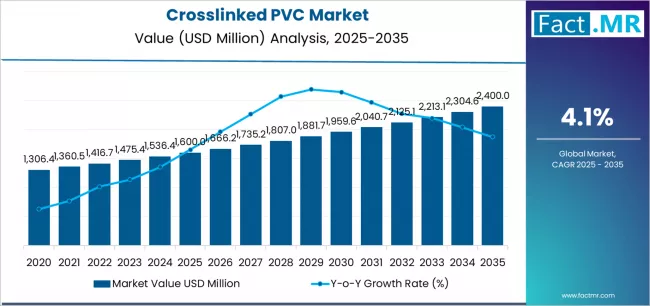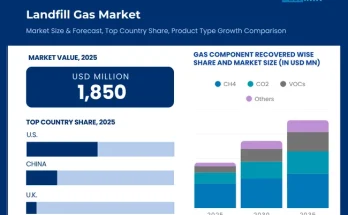As industries increasingly demand durable, chemical-resistant, and temperature-stable materials, the crosslinked PVC (cPVC) market has gained significant attention. cPVC is a modified form of polyvinyl chloride that exhibits superior mechanical and thermal properties, making it suitable for a wide range of industrial, construction, and infrastructure applications.
The market’s growth is driven by the need for long-lasting, low-maintenance solutions in piping, electrical insulation, automotive components, and chemical processing. With enhanced performance characteristics compared to conventional PVC, cPVC products are increasingly preferred by manufacturers and end-users seeking reliable, high-quality materials.
Market Overview:
Crosslinked PVC is manufactured by chemically or physically modifying standard PVC to improve its thermal resistance, impact strength, and dimensional stability. This modification transforms the polymer structure, making it resistant to heat deformation, chemical corrosion, and UV exposure.
The versatility of cPVC allows it to be used in high-performance applications where conventional plastics may fail. It is widely adopted in industries that demand resistance to harsh chemicals, elevated temperatures, and long-term durability.
Ongoing innovations in resin formulation, compounding techniques, and crosslinking processes are further enhancing the properties of cPVC. Manufacturers are developing formulations optimized for specific end-use applications, enabling cPVC to meet stringent industrial, environmental, and regulatory standards.
Regional Insights:
North America continues to lead the adoption of cPVC, driven by high industrialization, infrastructure modernization, and stringent quality standards for construction and chemical processing. The region’s emphasis on durable and sustainable materials supports market growth.
Europe is another key market, where environmental and safety regulations promote the use of high-performance, low-maintenance piping and industrial solutions. The region also benefits from advanced research and development capabilities in polymer technologies.
Asia-Pacific is emerging as a high-growth region for cPVC due to rapid urbanization, infrastructure expansion, and the rise of industrial hubs. Countries like China, India, and Japan are witnessing increased demand for cPVC in residential, commercial, and industrial applications.
Latin America and the Middle East & Africa are gradually adopting cPVC products in water distribution, chemical processing, and construction, reflecting growing awareness of the benefits of crosslinked polymers in durability and maintenance reduction.
Key Trends & Forecast:
- Expansion in Construction and Infrastructure:
cPVC pipes, fittings, and panels are increasingly used in plumbing, water distribution, and electrical conduit applications due to their corrosion resistance, heat stability, and long service life. - Growth in Chemical Processing Applications:
Industries such as pharmaceuticals, petrochemicals, and wastewater treatment leverage cPVC’s chemical resistance and thermal performance to ensure safe and durable systems. - Focus on Sustainability and Environmental Compliance:
The production of cPVC is evolving to incorporate environmentally friendly additives and recycling strategies, reducing ecological impact while maintaining performance. - Technological Advancements in Crosslinking Techniques:
Improved chemical and radiation crosslinking methods are enhancing mechanical properties and enabling tailored performance for specialized applications. - Rising Adoption in Automotive and Electrical Industries:
cPVC is being used in automotive wiring insulation, cable jackets, and electrical enclosures due to its superior thermal and flame-retardant properties.
Applications & End-Use Outlook:
Construction and Plumbing:
cPVC is widely utilized in piping systems, water distribution, and HVAC applications. Its resistance to high temperatures, chemical corrosion, and UV degradation makes it an ideal choice for durable infrastructure projects.
Chemical and Industrial Processing:
cPVC is preferred for chemical tanks, pipe systems, and industrial equipment that require long-term resistance to aggressive chemicals, high pressure, and elevated temperatures.
Automotive and Electrical:
In the automotive sector, cPVC is used in wiring insulation, flexible tubing, and protective components. Electrical and electronics industries rely on cPVC for cable insulation, conduit systems, and panels due to its dielectric strength and thermal stability.
Marine and Water Management:
cPVC is increasingly used in marine applications for piping, tanks, and protective coatings due to its corrosion resistance and structural integrity in saltwater environments.
Consumer and Commercial Products:
cPVC’s durability and ease of maintenance make it suitable for furniture, roofing sheets, and decorative panels in commercial and residential applications.
Conclusion:
The crosslinked PVC (cPVC) market is poised for sustained growth as industries seek high-performance, durable, and low-maintenance materials. Its superior thermal, chemical, and mechanical properties make it a preferred alternative to conventional plastics and metals in demanding applications.
As manufacturers continue to innovate with enhanced formulations, environmentally friendly production techniques, and tailored crosslinking processes, the adoption of cPVC is expected to expand across construction, chemical processing, automotive, and electrical sectors.
In a world increasingly focused on durability, efficiency, and sustainability, crosslinked PVC products are emerging as a vital solution, enabling industries to build resilient, long-lasting, and safe infrastructure and systems.
Browse Full Report – https://www.factmr.com/report/crosslinked-pvc-market



